The Ultimate Guide to Sensory Equipment for Kids in Indoor Playgrounds
Creating an enjoyable indoor playground involves more than just slides, trampolines, and climbing walls. It’s about giving every child a chance to explore, learn, and grow. That's where real physical equipment is important. Using soft lights, textured boards, smart dividers, and gentle play areas, indoor play spaces are transformed into welcoming environments that support all children, including those with special needs. In this guide, you'll learn why sensory rooms for kids are important, the different types of sensory play equipment, and how these tools help with development while making your indoor play area more friendly and accessible for everyone. In this guide, you will learn why these spaces are important, the different types of sensory play equipment, how to create a sensory room, and how sensory play helps children grow and develop.
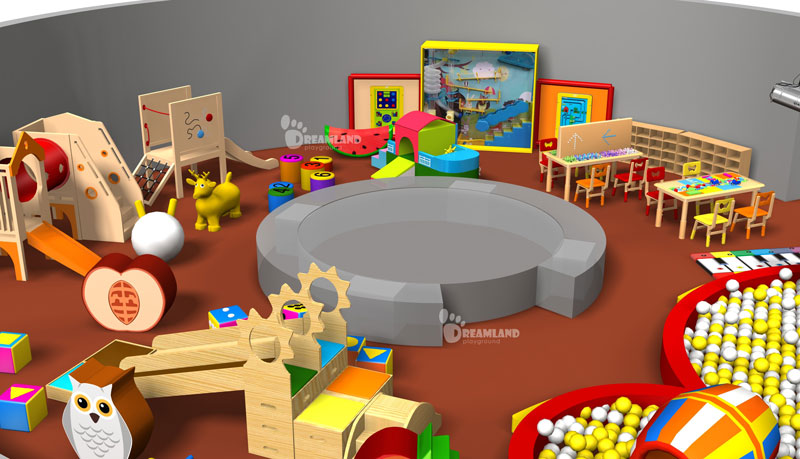
What Are Sensory Rooms and Sensory Equipment?
If you’ve visited an indoor play area, you've likely noticed special areas with soft lighting, fabric walls, and engaging play stations. These are called sensory rooms. They are special areas with real objects that help children explore and learn about their senses. Indoor playground equipment includes shiny fiber-optic lights, soft material boards, and smart play walls. These tools help kids develop their sense of touch, sight, sound, balance, and movement.
A real room for kids isn't just for fun; it's a useful space that helps children of all abilities learn and grow. Some toys are made for all children to enjoy, while many other toys are designed specifically for children with autism, ADHD, or other developmental challenges. That's why super introverted touch devices and healing touch equipment have become important features in today's family entertainment centers, indoor adventure play areas, and trampoline park areas.
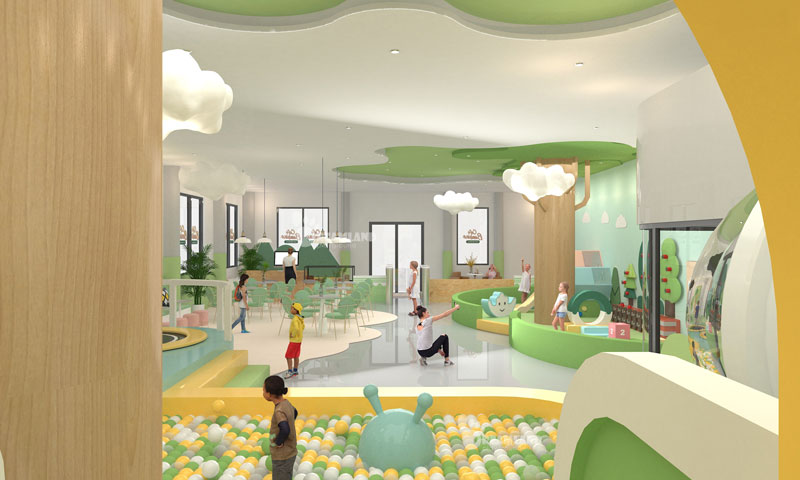
Why Sensory Rooms Are Essential for Kids
A true children's room is more than just an addition to an indoor playground; it is a secure space where kids can unwind, explore, and pick up valuable life skills. The engaging play equipment in these rooms facilitates movement, touch, hearing, and sensation in ways that are beneficial for therapy. Here's why they are so crucial:
Assistance for Children with Disabilities
Special sensory aids can help establish a peaceful and orderly environment for kids who struggle with touch, have ADHD, or are extremely shy. It promotes appropriate reactions to commonplace circumstances and aids in the management of intense emotions. Engaging hands-on spaces equip kids with the skills they need to overcome obstacles. Gentle instruments, calming music, and soft lighting all contribute to better emotional equilibrium and stress reduction.
Enhances the Center and Education
Children who utilize smart touchable tools are better able to focus and pay attention, which is crucial for success in school and beyond.
Enhancing Social Communication
Engaging in hands-on play fosters communication and teamwork. Taking turns using playground equipment or exploring walls together are two examples of activities that foster social skills and confidence.
Promotes All Types of Play
You can make your indoor play space inclusive of all children by adding entertaining equipment. Every child, regardless of ability, can have fun playing in tangible rooms. This makes your indoor play area or family entertainment center (FEC) inclusive of all ages. Simply put, sensory rooms are vital spaces that support children's learning, therapy, and well-being; they are not merely for amusement. Every youngster is guaranteed to feel involved and accepted in these settings.
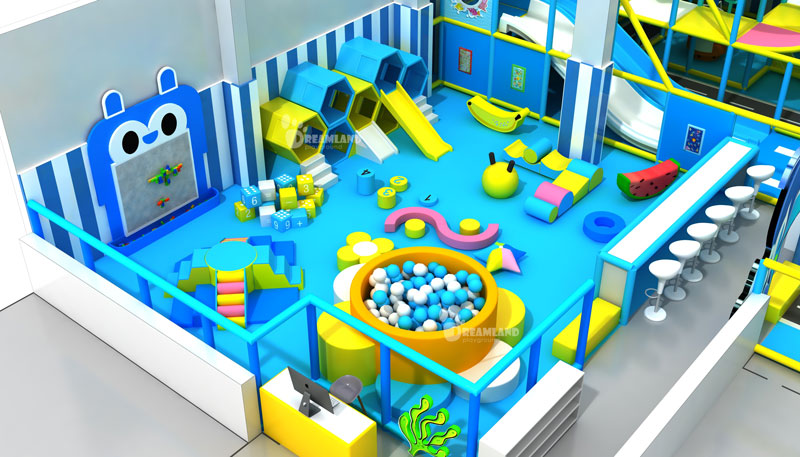
Types of Sensory Equipment and Their Benefits
Many different equipment and toys that aid in the development of various senses may be found when designing a playroom for children or adding a dedicated play area within a play space. Every kind of physical play equipment has special benefits that enable kids to explore and create in fun and therapeutic ways.
1. Visual Sensory Equipment
Bubble tubes, fiber-optic strands, and divider boards are examples of visual and tactile devices that produce captivating light displays that promote calm and vitality. Since relaxing visuals can help children feel better and focus better, these devices are especially beneficial for children who are anxious or easily overwhelmed.
Special tools allow extremely shy children to experience what they see without feeling overwhelmed. The focus of physical equipment is on the tactile sensations of objects. Children are encouraged to experiment with various surfaces and materials by finished partitions, sturdy boards, and soft play accessories like foam pieces or padded mats.
2. Tactile Sensory Equipment
Playing with the hands helps develop hand-eye coordination, increase sensory awareness, and improve hand abilities. For many kids who have trouble with touch, these surfaces are reassuring and encouraging.
3. Auditory sensory equipment
Sound-related gadgets employ sound to meaningfully engage kids. While calming background music or natural sounds foster a tranquil ambiance, musical boards with bells, drums, or sound-making surfaces encourage creativity. In addition to making play more pleasurable, these instruments support young children's learning by fostering their ability to recognize sounds, listen, and regulate their emotions.
4. Proprioceptive & Movement Sensory Equipment
It is also crucial to play with movement. Swings, rockers, and spinners are examples of equipment that work on the vestibular system to enhance balance and body awareness. Children can burn off energy in a fun and safe way by using smaller bounce mats and trampoline stop gear in a play area. Coordination, balance, and self-confidence in one's physical capabilities are all enhanced by these activities.
5. Vestibular and Balance Equipment
Specialized equipment, such as weighted blankets, crash pads, or climbing walls, can significantly improve the weight and growth of kids who require assistance. When climbing walls and ninja course equipment are used in play spaces, children can enjoy safe challenges that improve their strength, body control, and spatial awareness.
6. Interactive Sensory Equipment
Last but not least, user-friendly gadgets integrate enjoyment and education in practical ways. Smart floor projectors, unique play boards, and touch-activated separators react to movement and touch, keeping children engaged and fostering their ability to solve problems. The purpose of these activities is to foster social development, teamwork, and communication among participants.
You can create an environment where children of all abilities can succeed by employing practical tools and equipment. Every component of your indoor play area or family entertainment center (FEC), whether it is a serene spot to gaze, a wall composed of various materials, or an exhilarating climbing area, contributes to happiness, physical development, and enjoyable play.
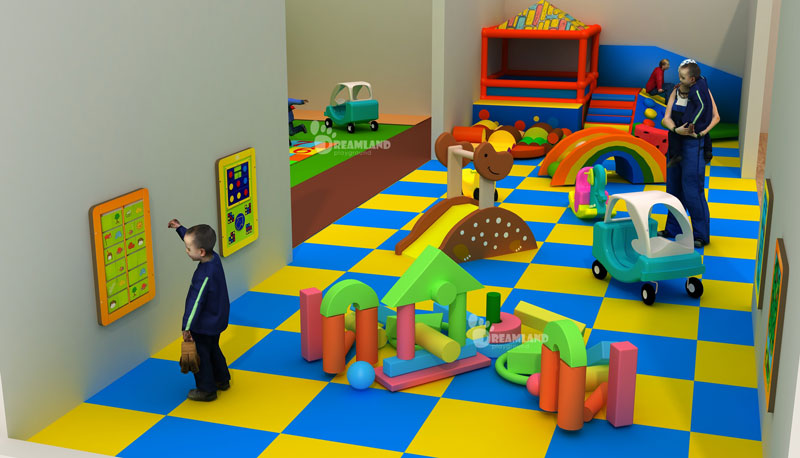
Designing a Sensory Room: Key Considerations
Your indoor play area can be transformed into a joyful and peaceful space with a well-designed tactile room for children. However, meticulous planning is necessary to create the ideal setting. It is insufficient to simply furnish a space with toys and lighting. Everything in the space should be thoughtfully chosen to encourage children's vitality, mobility, and development. These are the most crucial points to remember.
1. Prioritize Safety in Every Detail
Prioritize security in every aspect. The most crucial aspect of any physical location is security. Soft, cushioned surfaces are ideal because children will be climbing, touching, and moving around freely.
While letting youngsters explore, soft play equipment such as crash pads, foam forms, and padded mats helps avoid injury. Safe materials, break-resistant mirrors, and smooth edges are essential. Toys with moving parts should be sturdy and made for indoor play in order to withstand frequent use.
2. Balance Stimulation and Calmness
Children should never feel overstimulated in a sensory room. Vibrant surfaces, noises, and lighting can be thrilling. But having too many of them at once can be stressful, particularly for kids with sensory processing issues or those who are quite quiet.
An energetic space with entertaining, hands-on activities like touch boards or tiny trampolines, and a quiet room with soothing objects like bubble tubes or weighted blankets are features of the best plans. Depending on their needs, children can select between excitement and relaxation using this choice.
3. Create an Inclusive Layout
Ensuring that every child is able to utilize the indoor play area's equipment is crucial. Consider wheelchair accessibility when making plans, include height-adjustable boards, and ensure that walkways are spacious. Commonplace objects, such as music boards or wall decorations, should be placed at a height that is convenient for small children and others with limited mobility. This well-thought-out concept helps your indoor play area or family entertainment center (FEC) draw more guests and transforms your tactile room into a warm and inviting space for families.
4. Integrate with the Larger Playground Experience
The primary physical rooms enhance the entire interior experience and activities offered; they are not distinct from one another. For instance, position sports facilities, climbing walls, or trampolines close to quiet rooms. Children can alternate between areas for vigorous play and ones for relaxation in this way. This establishes a place where children can release their energy through energetic play, then relax in a peaceful setting before returning to group activities.
5. Choose Flexible and Interactive Equipment
Select furnishings that can adapt to the changing demands of your children. This implies that your area should be adaptable. Select smart play area layouts and equipment that are simple to modify or improve. You may add new games to projection systems or swap out wall-mounted boards. Because of its adaptability, the tactile room remains interesting, engaging, and appropriate for a wide range of ages.
6. Design for Both Group and Individual Play
Make plans for both solo and group play. Different children have different experiences with touch-based play. While some people thrive in social situations, others would rather engage in solitary, peaceful pursuits. There should be two possibilities in a smart plan.
People collaborate and communicate more effectively in smart, welcoming rooms with amenities like sound boards or sophisticated flooring. At the same time, youngsters can rest and rejuvenate in peaceful spaces with sensory toys or soothing images.
Consult with Design Professionals
Lastly, speaking with experts like Dreamland in your field or child development specialists can be quite beneficial. We can assist you in selecting the ideal combination of equipment for your sensory space to facilitate various activities, ensuring that it is enjoyable and promotes development and well-being.

The Role of Sensory Equipment in Early Childhood Development
Children in their early years develop rapidly and are constantly learning to comprehend the world around them. Children can develop and learn a lot through sensory play, which includes touching, seeing, hearing, and moving. Using the appropriate equipment while children play in physical rooms and indoor spaces can help them acquire critical life and school skills.
Cognitive Growth
Enhancing children's learning and cognitive abilities is one of the primary objectives of touchable toys. Children can enhance their memory and problem-solving abilities by interacting with digital play walls, observing surfaces on material boards, or observing changes in bubble tubes.
These activities lay the groundwork for critical thinking by preparing the brain to comprehend and react to many types of information. Hands-on play also has a significant impact on language development. In a touch-friendly environment, children are learning new words and developing their communication skills as they describe what they see, hear, or feel.
Language Development
Children's speaking and listening abilities are enhanced when they use interactive tools like sound boards or projection games to express themselves, collaborate with others, and even connect with their peers. Playing with engines can help you get better at them.
Activities that enhance muscle strength, balance, and coordination include traversing a ninja course, jumping on trampoline equipment, and climbing on soft squares. Real toys for children, such as skill-building boards or puzzles, also aid in enhancing their hand-eye coordination. This helps children get ready for things like writing and self-care.
Emotional & Motor Skills
Emotional development also greatly benefits from the use of healing touch tools. Children can learn to control their emotions and behavior, which is a crucial life skill, with the aid of weighted blankets, calming lights, and relaxing music. These resources give children who struggle with studying or are extremely shy a safe method to manage their emotions, reduce anxiety, and sharpen their focus. Being able to relax not only alters behavior but also facilitates learning in organized environments.
Social Development
Lastly, genuine play is critical to social development. Many kinds of playground equipment, such as shadow-based games, musical walls, or cooperative activities, teach children to share, cooperate, and show consideration for others. In a secure indoor setting, kids learn how to cooperate, take turns, and form friendships.
To put it briefly, tactile equipment is crucial for learning and is not simply for enjoyment. It helps kids develop into self-assured, inquisitive, and well-rounded adults by fostering their thinking, speaking, motor, emotional, and social skills. Therefore, it is a wise investment for the future of children's development to add peaceful, interactive tools and enjoyable play areas to indoor play areas and family entertainment centers.
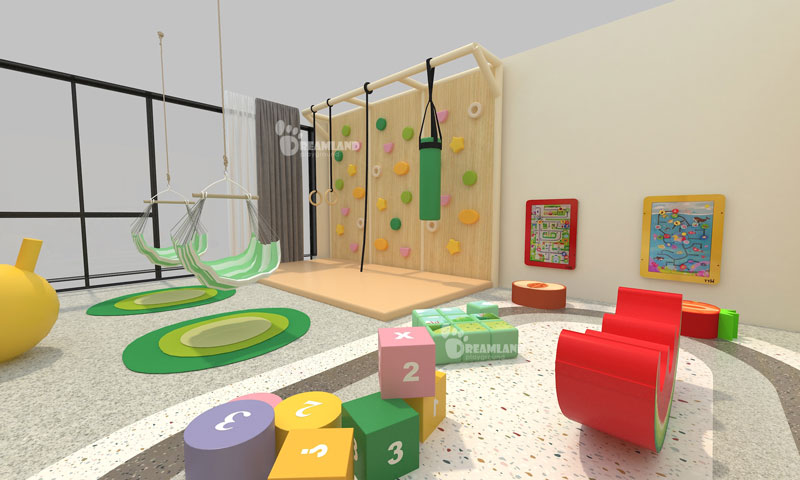
Selecting the Right Indoor Sensory Playground Equipment Manufacturer for Different Needs
Adding sensory play equipment to your indoor play area or creating a family entertainment center can help create a location where all children, regardless of ability, can flourish, learn, and have fun. We do more than just construct indoor playgrounds at Dreamland. We design amazing spaces for kids to play, grow, and learn. We specialize in designing and establishing entertaining play spaces and equipment.
Family entertainment centers (FECs) worldwide have faith in us because of this. We provide kid-friendly areas that are safe and entertaining, such as quiet rooms, trampolines, and ninja courses that are open to all. Every expansion is made to your specifications, guaranteeing a shift in play and advantages for development. When you purchase top-notch indoor playground equipment from Dreamland, you are also building a destination that will draw families back time and time again. Contact us now and turn your indoor playground into a safe, inclusive, and unforgettable space for every child.
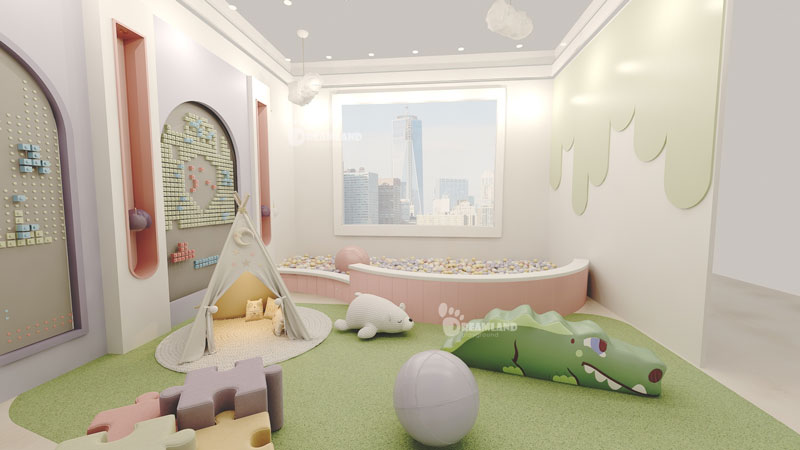
Sensory equipment is more than simply an update when it comes to indoor play areas; it is an investment in the development, education, and enjoyment of kids. These products, which range from practical tools and equipment to tangible toys for kids, make play enjoyable, instructive, and therapeutic. All children, especially those with special needs, can benefit from hands-on play, whether it takes the form of enjoyable activities like obstacle courses and climbing walls in play areas or gentle lighting in a dedicated space for children.






